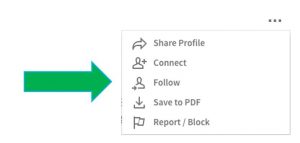B2B marketing is at the center of product announcements at Oracle CloudWorld, especially focused on Oracle Unity CDP.

Oracle is announcing several enhancements to Oracle Unity CDP, a key part of the Oracle Fusion Cloud CX suite of applications. It also announced moves to make B2B buying easier using Oracle Fusion Cloud.
The announcements came today at Oracle CloudWorld in Las Vegas.
New capabilities within Oracle Unity. The keynote of Oracle’s Fusion offerings has been to fuse new and better relationships between marketing and sales teams. That’s reflected here in the presentation of unified account views, based on data from marketing, sales and service clouds. A novel development, however, is the incorporation of data from back office sources, including finance, contracts, product usage and supply chain.
There are four new capabilities:
- Account Profile Explorer. This is the feature that allows a unified view of front-end and back-end customer data.
- Buying group and opportunity scoring. This uses AI to detect and analyze buying group signals based on things like role, title and engagement with topics.
- Industry onboarding accelerators. These help accelerate CDP implementation with industry-specific templates, data models and attributes; currently available for high tech, industrial manufacturing, professional services, telecommunications, utilities, financial services, travel and retail.
- Oracle Analytics Cloud integration. This will provide data visualizations and help support decision-making.
We asked Oracle SVP Rob Pinkerton to reflect on the importance of these enhancements. One point he made is that Oracle Unity CDP is actually a relatively young product.
“It’s been in the market for a couple of years,” he said, “but this is still a very early, young product. To put a database with this kind of power in the front-office, in front of marketers, and to do so in a way that puts corks on their forks so they don’t poke themselves in the eye… I feel this is early innings in this game.”
With that caveat, Pinkerton highlighted Account Profile Explorer. “This is the place where sales and marketing teams are falling in love again. In large organizations, sometimes sales doesn’t know who marketing is marketing to, and marketing doesn’t know who sales really wants to sell to. Sales is focused on accounts and marketing is focused on contacts. What Account Profiler does is give people ways to really focus sales and marketing efforts in the core areas where you are most likely to win and create value. It even makes it possible to introduce product teams into the mix.”
In a nutshell, Account Profile Explorer “shortens the assembly line of the sales and marketing flow.”
As far as incorporating back-office data in the customer dataset, Pinkerton says some of Oracle’s competitors are playing catch-up. “They realize there’s gold in them thar hills,” he laughed. “Oracle has thought this through at a big enterprise level,” he said. “Some of our customers are the biggest, gnarliest, industry-leading providers, often of things you’ve never heard of — they’re not big brands, they’re the ones that make the machinery, that deliver the infrastructure.”
A unified view of B2B buying and selling. A new solution within Oracle Fusion Cloud CX gives buying and selling teams a collaborative view of their commercial relationships, featuring quotes, orders, account and contact profiles, subscriptions, renewals and assets. This features a connection between customer and financial data and is aimed at supporting a range of GTM motions including recurring revenue, usage-based and consumption-based strategies.

In addition, enhancements to Oracle’s revenue transformation solution include:
- Unified CPQ, contracts and order management helping to organize and execute complex sales agreements.
- Generative AI for contract summarization reducing contract processing time and assisting with contract questions.
- Generative AI for sellers to create emails, executive briefings, summaries of CPQ, etc.
Don’t forget the consumer. Although these announcements shine a light on Oracle’s support for B2B marketing teams, Pinkerton didn’t want to overlook B2C. “We still have a B2C business that we’re committed to. Responsys is our leading product; Unity is very popular there. AI is transforming the way that consumers buy things in a way we don’t fully know yet.”
Teaming Responsys with Unity does place an emphasis on first-party data, of course. “How do we provide more value to our existing customers?” Pinkerton asked. “What do we know about our existing customers? How do we learn who they are more quickly so we’re not out there spending money on third-party data? Understand how they’re responding, integrate that into your existing data, make your decisions and you’ll do well. That’s what we’re recommending.”
Why we care. An overall view of customer data, especially in the B2B space, incorporates not just sales and service, but of course things like contracts — especially in a subscription economy. It would not be fair to say that Oracle is uniquely positioned to introduce back-office data to a CDP. SAP has made similar moves. What Oracle and SAP have in common — differentiating them from Adobe and Salesforce, for example — is that their enterprise back-office solutions like ERP are, if anything, bigger than their CX offerings.
What’s more, Oracle Unity can fit a “composable” structure, leveraging Oracle Autononmous Datawarehouse, which just might be where all that back-office data sits.
The post Oracle enhances its Unity CDP offering appeared first on MarTech.
(6)
Report Post







